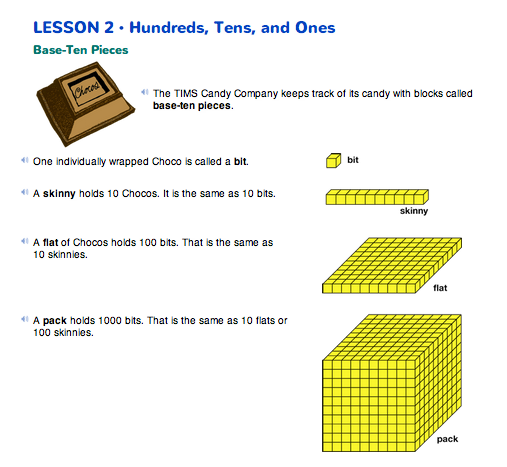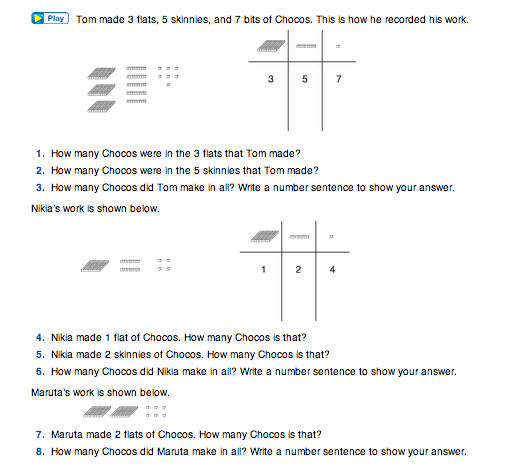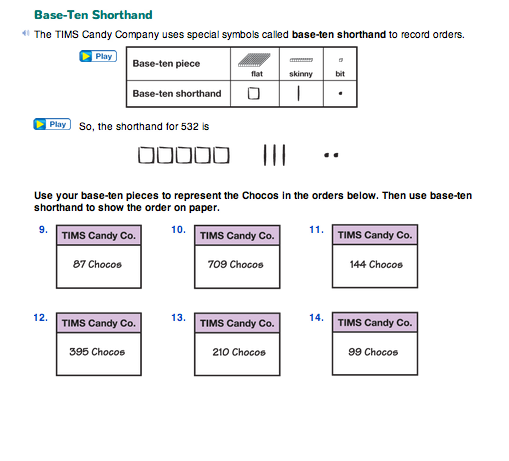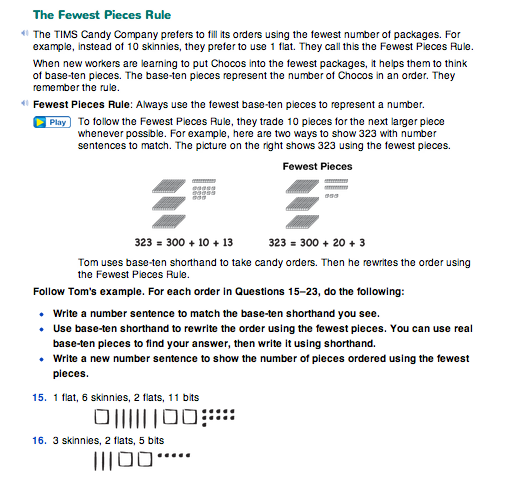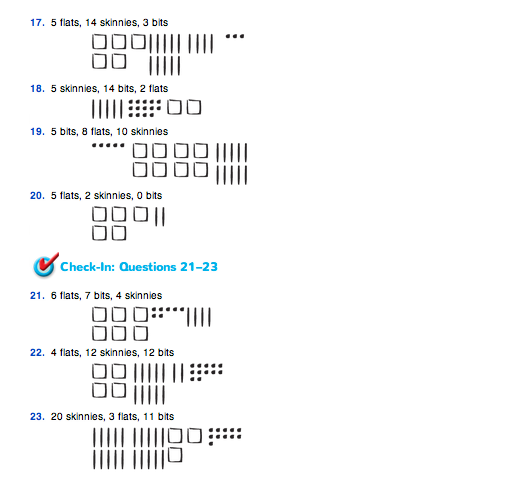Hundreds, Tens, and Ones
Est. Class Sessions: 2Developing the Lesson
Part 2. Show Different Partitions of 3-Digit Numbers
Use a Base-Ten Recording Sheet. Ask students to represent three-digit numbers in different ways on copies of the Base-Ten Recording Sheets 1 Master. For example, show the class 2 flats, 4 skinnies, and 3 bits. Then write the number in a table on a display of the Base-Ten Recording Sheets 1 Master. See Figure 3.
Generate a number sentence as you ask questions such as:
As pairs find several other partitions of 243, ask students to represent them on their Base-Ten Recording Sheets 1, along with number sentences that match.
Direct students to the Hundreds, Tens, and Ones pages in the Student Guide. They describe the TIMS Candy Company and the bits, skinnies, flats, and packs that are used to package Chocos. After discussing the introduction, ask students to answer Questions 1–8 working together in pairs or small groups.
Use Base-Ten Shorthand. Questions 9–14 in the Student Guide give students practice representing numbers with base-ten pieces. First they should represent the numbers with actual pieces. Then they should show their answers on paper.
It can be quite tedious to draw base-ten pieces, so they can use a shorthand notation instead. Ask students to look at the base-ten shorthand symbols for a flat, skinny, and bit in the table in the Base-Ten Shorthand section of the Student Guide. Before assigning the questions on this page, practice using base-ten shorthand. Note that it is not necessary to draw the blocks in place value order. Students may find it helpful to model a number with base-ten pieces first, then transcribe it into shorthand.
Draw numbers in shorthand as shown in Figure 4 and ask:
Assign Questions 9–14 to student pairs.
Use the Fewest Pieces Rule. Read The Fewest Pieces Rule vignette in the Student Guide together as a class. Model how to trade 10 pieces for the next larger piece whenever possible. Show students an example where the base-ten shorthand is out of the expected place value order, as in Figure 5.
Ask:
Discuss the number of pieces used in a few of the partitions to be sure they understand what it means to find the partition with the fewest pieces. This is an idea they discussed for tens and ones in Lesson 1. They will return to it in Lesson 3.
Assign Questions 15–23 in the Student Guide.












 ;
; 

